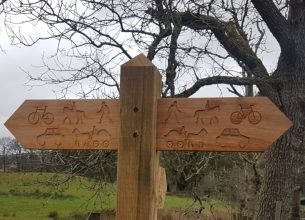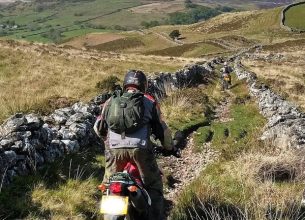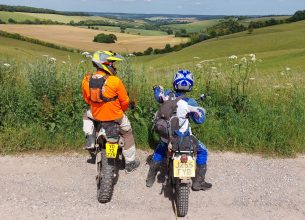Trail Riding Terminology
The world of Trail Riding and Green Roads has a bewildering array of terms and acronyms which can be confusing when all you want to do is ride your bike! What follows are some references to get your head around.
Public Road
Unclassified Road
Unclassified County Road (UCR)
A county road that was not classified into category A or B.
Byway Open to All Traffic (BOAT)
A classification of road that was introduced in 1968 to record pre-existing roads that could lawfully be ridden by the public with motorcycles. The classification of BOAT was overlaid onto existing classes of road such as county road and used to administer the Definitive Map and Statement.
Roads that are recorded as BOAT are presumed to be lawful to use with motorcycles.
To be recorded as a BOAT on the Definitive Map and Statement the authorities must be satisfied that motorcycle rights exist on the day the BOAT is recorded. But the very next day the authorities may discover evidence of mistake and seek to correct the Definitive Map and Statement by removing the BOAT record.
Public Path
A highway that is either a footpath or a bridleway. Footpaths and bridleways (public paths) are “elsewhere than roads” for the purposes of the offence under the road traffic act of Trail Riding “elsewhere than a road” without lawful authority.
Other Route with Public Access (ORPA)
This is a term created by Ordnance Survey in 1997 to depict public roads on OS maps. Many shown in or near to urban areas have now been sealed, however, some remain unsealed and have motor vehicle access. It is important to establish what public rights of access exist with the Local Authority.
Classified Road
A road that has been classified in exercise of statutory powers. Present day roads are classified into A and B categories – A 259, B21109 etc.
The term originates from the Ministry of Transport Act 1919 for the purposes of making advances from the Road Fund (monies that were collected by Road Tax). There were two classifications to begin with until 1966 when a third classification was added.
County Road
An obsolete statutory term that was used between 1929 and 1972. Generally, all roads maintainable at public expense in rural areas were county roads.
Unsealed Unclassified Road
A road that is not classified into category A or B and which has an unsealed surface i.e. a road surface that does not mainly consist of asphalt, coated roadstone, concrete or other prescribed material used for the formation of a sealed road surface.
White Road
A minor road recorded in white (uncoloured) on OS maps. Some of these are not highways, so it is important to establish what – if any – public rights of access exist with the Local Authority.
Lane
A type of road that has been defined by the courts as a minor road leading between one major road and another. All lanes are roads, but not all roads are lanes. Some green roads are major roads that do not meet the definition of “lane”.
Green Road is our preferred term for unsealed highways where motor vehicle rights of use exist. Not all roads are black!
Public Footpath
A highway that is “elsewhere than a road” where it is an offence to Trail Ride without lawful authority. Footpaths may be used by pedestrians. There is no right to use a powered mobility scooter on a footpath, but such use is decriminalised and generally takes place on the basis of permission (either express or implied). The exception to this is footpaths that are level crossings where use of a mobility scooter may be a trespass and the offence of trespassing on a railway may be committed.
Restricted Byway
A highway that is “elsewhere than a road” where it is an offence to Trail Ride without lawful authority. Restricted Byway may be used by pedestrians, equestrians, and non-motorised vehicles. There is no right to use a powered mobility scooter on a Restricted Byway but such use is decriminalised and generally takes place on the basis of permission (either express or implied). The exception to this are restricted byways that are level crossings where use of a mobility scooter may be a trespass and the offence of trespassing on a railway may be committed.
Bridleway
Permissive Path
Definitive Map and Statement (DM or DMS)
List of Streets (LOS)
Traffic Regulation Order (TRO)
Related articles

Sharing the trail
Green Roads offer a unique and special way to explore the countryside for all users sharing the space with respect and a smile…

Code of conduct
The TRF’s Code of conduct has been developed to compliment the countryside code and safeguard the future of Trail Riding…

Tails from the trails
The world of Trail Riding brings together a shared passion for the love of the countryside and a sense of adventure…
